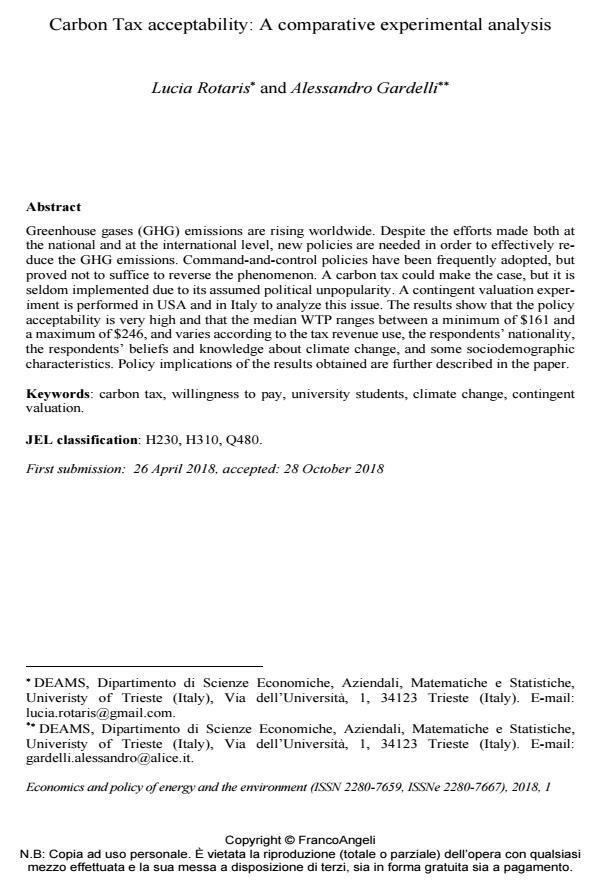Carbon Tax acceptability: A comparative experimental analysis
Journal title ECONOMICS AND POLICY OF ENERGY AND THE ENVIRONMENT
Author/s Lucia Rotaris, Alessandro Gardelli
Publishing Year 2019 Issue 2018/1
Language English Pages 16 P. 117-132 File size 232 KB
DOI 10.3280/EFE2018-001005
DOI is like a bar code for intellectual property: to have more infomation
click here
Below, you can see the article first page
If you want to buy this article in PDF format, you can do it, following the instructions to buy download credits

FrancoAngeli is member of Publishers International Linking Association, Inc (PILA), a not-for-profit association which run the CrossRef service enabling links to and from online scholarly content.
Greenhouse gases (GHG) emissions are rising worldwide. Despite the efforts made both at the national and at the international level, new policies are needed in order to effectively reduce the GHG emissions. Command-and-control policies have been frequently adopted, but proved not to suffice to reverse the phenomenon. A carbon tax could make the case, but it is seldom implemented due to its assumed political unpopularity. A contingent valuation experiment is performed in USA and in Italy to analyze this issue. The results show that the policy acceptability is very high and that the median WTP ranges between a minimum of $161 and a maximum of $246, and varies according to the tax revenue use, the respondents’ nationality, the respondents’ beliefs and knowledge about climate change, and some sociodemographic characteristics. Policy implications of the results obtained are further described in the paper.
Keywords: Carbon tax, willingness to pay, university students, climate change, contingent valuation.
Jel codes: H230, H310, Q480 H230, H310, Q480.
Lucia Rotaris, Alessandro Gardelli, Carbon Tax acceptability: A comparative experimental analysis in "ECONOMICS AND POLICY OF ENERGY AND THE ENVIRONMENT" 1/2018, pp 117-132, DOI: 10.3280/EFE2018-001005